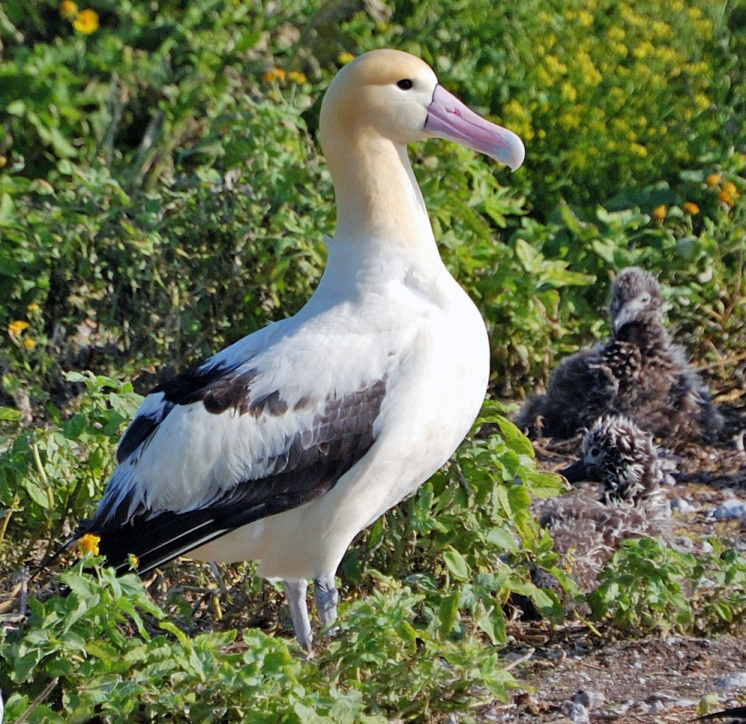"We’ve come to make sense of this embrace
to see the shapes of ourselves in these birds"
--Victoria Sloan Jordan
The Great American Garbage Patch-- it almost sounds quaint, doesn't it? As if it might be a junk pile on the back acre of grandpa's farm where one could find and re-purpose a rusty old wagon or a two-wheeled tricycle.
The name doesn't connote the serious nature of it (no pun intended), so perhaps it should be called the Great Pacific Eco-Destroying Cesspool of Plastic and Toxic Sludge. There's been some recent debate about the size of the plastic island in the Pacific, some saying it's as big as the U.S., some saying it's as big as Texas, and some arguing that, no, it's only about one percent of the size of Texas.
I don't know how big one percent of Texas is, but here's the thing: If the Great Pacific Garbage Patch is any bigger than the size of my big toe it's too big, and there are a million reasons why this is true, but here's one of them: the albatross.

Once a month I teach poetry to the children at the Unitarian Church in Fitchburg, Mass. The theme for January is Reuse, Reduce, Recycle, and I wanted to show the children the ways artists and writers employ their talents to make the world a better place.
As I researched environmental poetry I stumbled across Victoria Sloan Jordan's poems about the albatrosses, and I knew it was going to be the lesson.
The albatrosses mistake the brightly colored plastic floating in the ocean for food, eat it and starve to death or choke, but not before feeding it to their babies, repeating the cycle. All over the atoll are rotted albatross carcasses, bellies exposed to show the pieces of plastic perfectly intact. Of the 21 species of albatross, 19 are nearly extinct.
Sloan Jordan wrote about her visit to Midway Atoll with Chris Jordan who photographed the dead albatrosses.
I showed the UU children one of the less graphic photos, and they wrote poems titled, "In the Albatross's Belly," listing what they saw there. One boy's poem began, "No fish."
I didn't know what was happening in the sanctuary while we were downstairs discussing the plastic pieces we saw inside the albatross, but I opened Rev. Seligman's sermon this morning and found this:
"None of us alone or even collectively can save everyone. We cannot stop homelessness or hunger. We cannot compel those who wield weapons of mass destruction or improvised explosive devices to turn them into ploughshares. We cannot eliminate all forms of exploitation: animal, human, botanical. But we can build an ark. We can create a structure to preserve creation. To preserve the power and relentless testimony of creativity: human, animal and botanical. We can implement ministries urban and rural. We can till the ground and cultivate gardens. We can compost. We can create spaces for contemplation: labyrinths and gardens and walking trails. We can create spaces to memorialize and honor our beloved by partnering with the land and its verdant beings." -- Rev. Leaf Seligman
There are very few things I do well. I can't be trusted with a hammer and most of what I attempt to grow browns and curls, but I like to think I can turn a phrase on occasion. Maybe I can make an ark of words.
What will your ark be?
You may also be interested in Chris Jordan's artwork depicting U.S. mass consumption: Running the Numbers: An American Self-Portrait